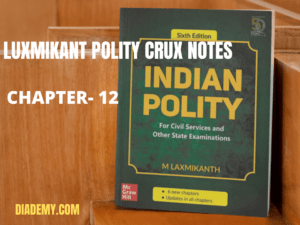
| Introduction – | Constitution of India provides for a parliamentary form of government, both at State (Art. 163 & 164) and Centre (Article 74 & 75). |
| Parl. Govt – | Executive is responsible → to the legislature for its policies and acts |
| Presidential system | Not responsible to the legislature for its policies and act |
| Cabinet Govt | Parliamentary government is also known as cabinet government or Responsible Govt.
Responsible Govt →As Cabinet is accountable to Parliament and stays in office so long as it enjoys confidence. Cabinet Government → Because Cabinet → nucleus of power in a parliamentary system. |
| FEATURES OF PARLIAMENTARY GOVERNMENT | 1. Nominal & Real Executive
· President is (Nominal&de jure executive) · PM is Real Executive · PM head of Govt. · President head of state
2. Majority Party Rule · The political party which secures majority seats in the LS forms the government. · The leader of that party is appointed as the PM by the President; · Other ministers are appointed by the President on the advice of PM. · Coalition of party may be invited by President to form Govt when no majority
3. Collective Responsibility (CR) · Ministers are CR to the Parliament in general &LS in Particular (Art 75). · Principle implies – LS can remove the ministry (i.e., council of ministers headed by the prime minister) from office by passing a vote of no confidence.
1. Political Homogeneity
· Member of some Political party in coalition, they share the same political ideology. 5. Double Membership · Ministers are members of both the legislature and the executive. · Person cannot be a minister without being a member of the Parliament. · A minister who is not a member of the Parliament for a period of six consecutive months ceases to be a minister. 6. Leadership of the Prime Minister · Leader of COM · Leader of Parl. · Leader of party in power.
7. Dissolution of the Lower House – · President dissolve the Parl. on recommendation of PM – before the expiry of its term and hold fresh elections 8.Secrecy · Ministers operate on – Secrecy of procedure · Cannot divulge information about their proceedings, policies and decisions. |
| Features of Parliamentary System | 1. Dual executive.
2. Majoritypartyrule 3. Collectiveresponsibility 4. Politicalhomogeneity 5. Doublemembership 6. Leadershipofprime Minister 7. Dissolution ofLowerHouse. |
| Merits of Parliamentary System | 1. Harmony between legislature andexecutive
2. Responsiblegovernment 3. Preventsdespotism 4. Ready alternative government 5. Widerepresentation. |
| Demerits of Parliamentary System | 1. Unstable government
2. No continuity of policies 3. Dictatorship of the Cabinet 4. Against separation of powers 5. Government by Amateurs. |
| Features of Presidential System | 1. Single executive.
2. President and legislatorselected separately for a fixedterm. 3. Non-responsibility 4. Political homogeneity may notexist. 5. Single membership 6. Domination ofpresident. 7. No dissolution of LowerHouse 8. Separation of powers. |
| Merits of Presidential System | 1. Stablegovernment.
2. Definiteness inpolicies 3. Based on separation ofpowers. 4. Government byexperts |
| Demerits of Presidential System | 1. Conflict between legislature and executive.
2. Non-responsiblegovernment 3. May lead toautocracy. 4. Narrowrepresentation. |
| Reasons for Adopting Parliament system | 1. Familiarity with the System
2. Preference to More Responsibility 3. Need to Avoid Legislative—Executive Conflicts 4. Nature of Indian Society |
Get all essential Crux notes by clicking here https://diademy.com/product/staticcrux/